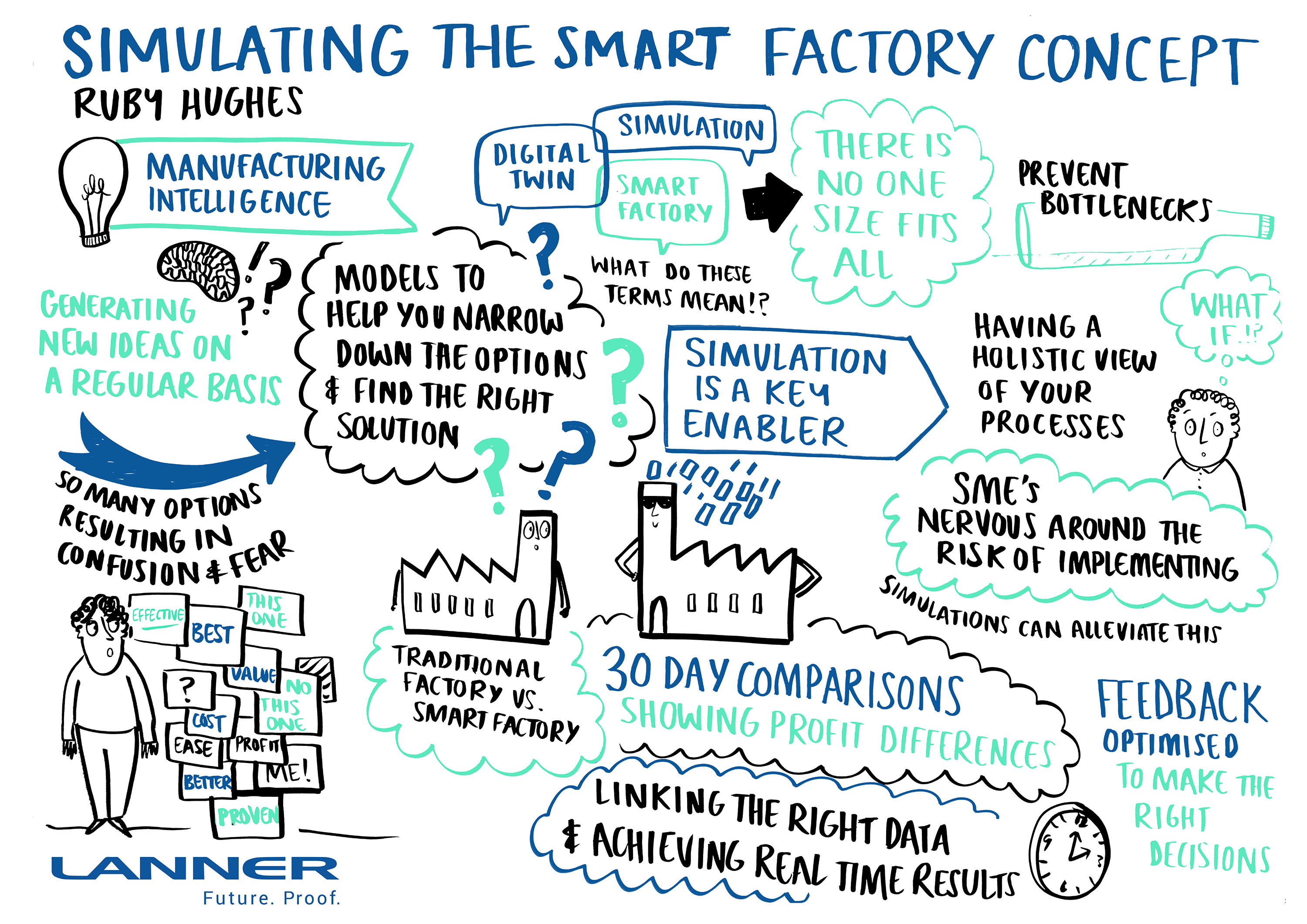4 Necessary Steps on Your Way Towards a Smart Factory

When you hear the term “Smart Factory”, what comes to your mind? If you come from a small to medium sized enterprise, it might be the increasing level of robotization and automation, effectivity and system throughput. If you have an enterprise of a wider scope, it could be autonomous vehicles, connectivity and making decisions in real time.
With the arrival of Industry 4.0, the topic of smart factories comes up quite often. However, there is no universal way to make your factory “smart”. And that is the reason why simulation and digital twins are crucial tools on the way towards digital factory. These 4 steps demonstrate how to use simulation, move your business forward and maximize the ROI of new processes and tools.
Step 1. Simulate
If you are to become a smart factory, you have to start with understanding the current processes. What are the bottlenecks? Do you need to improve the downstream processes, upstream ones or both? You need an accurate image of your starting position in order to identify your weak spots and accept strategic changes for implementing innovation.
It’s good to know that simulation doesn’t necessarily require new complex systems. For companies that are at the beginning of their way towards a smart factory, MS Excel will be of good help. You can connect it with a system like WITNESS from Lanner in order to perform simulation. For this practice, there are two good reasons. Firstly, everybody has experience with Excel, so there is great chance that all the data in the model will be correct. Secondly, with Excel, it’s pretty easy to tweak variables when you’re running ‘what-if’ scenarios in the simulation – all you need to do is to change the value in a cell and the model will immediately adjust to it.
Step 2. Avoid Risk
There is a lot of low cost sensors and input technologies connected with Industry 4.0, so it may seem that their introduction to operation could be a relatively easy and cheap option of testing unknown waters in the field. However, if you compare costs of these technologies’ utilization (usually not in a coherent and conceptual way) without the opportunity cost of not taking the best, the level of both costs and risk significantly grows.
And the research confirms this conclusion. A recent study found that 60% of IoT projects get stuck in the concept stage and are never successfully carried out.
It’s always important to realize that there is no universal concept of a smart factory, and that thorough consideration and evaluation of relevant thoughts in the context of the given business is necessary. Before their implementation.
Step 3. Monitor
Monitoring provides us with data that create excellent material for funding. This is a key sphere that is continuously being improved. The advantages are obvious. While major decisions in a traditional factory usually need less than a month to be made, in a smart factory, it’s less than a second.
For achieving this kind of speed level, you need interconnected systems and monitoring in real time. As compared to going into service and detecting the state, simulation provides an instant insight into the situation in terms of the defined standards. For example, if the device stops, you can immediately see the subsequent impacts on all monitored areas.
The final goal for smart factories is to use a series of digital twins that interconnect whole factories with supply chains in real time and therefore, give the users a complex and powerful tool for monitoring and managing the options of the entire system.
Step 4. Feedback
This step doesn’t get so much attention as the previous three, but it is crucial to the success of the entire system. There’s no point in simulating, investing and monitoring if you are not able to use the information for making decisions at the right time. You have to close the loop between insight into the problematics and real action.
Accept the Approach Based on Data and Proof in Order to Become a Smart Factory
The companies that will be successful in this field, and it doesn’t matter whether they are small enterprises or world-class players, follow these 4 steps.
Simulation will enable you to test changes in a risk-free environment, so you are able to accept smarter decisions and truly become a smart factory, which is much better than experimenting with real physical processes, assets and budgets.
Ruby Hughes, Technical Fellow, Head of Manufacturing Intelligence Team, AMRC with Boeing for Lanner.com blog
Related articles
Jun 7, 2024
DJI introduces its first delivery drone
DJI introduces its first delivery drone
Jun 7, 2024
5 expert insights into the world of dynamic simulations and logistics
5 expert insights into the world of dynamic simulations and logistics
Apr 2, 2024